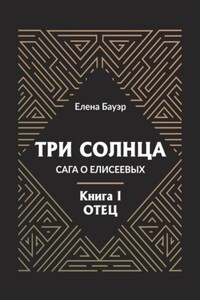VAST and sprawling, of almost epic dimensions in that theme and counter-theme battle for dominance, Capricornia reflects Australia in its failure to create an alternative to the society depicted in its pages. It is a rich Australian cultural archive. Herbert labours over the wide brown plains of the colony of Capricornia and finds characters who are readily identifiable as Australian types. There is an unpretentiousness of style which is often appealing; but an Aboriginal reader may find the narrative painful in its seeming historical objectivity. He or she begins to read the novel and finds scenes of devastation and heartbreak as the newcomers, the ‘dingoes’ of the text, destroy Black culture without a qualm. These ‘dingoes’ are depicted as a terrifying almost elemental force, an aspect of ‘natural selection’, which destroys the old in a process of ‘evolution’ towards a new ‘synthesis’.
But this scientific theory, which provides ontological thrust to the novel, is weakened by a counter-theme of ‘Fate’. Few, if any of the characters possess the gift of analytical thought, or question their place in the universe, and I use ‘universe’ deliberately as Herbert (and critics) has stressed that his narrative is concerned with universal themes. Thus events are seen not as random occurrences but as contradictions between theme and counter-theme: natural selection and Fate. The dominance of Fate in the opening pages of the novel is alarming. Events begin to unfold from the very beginning of white settlement and the arrival of what passes for civilisation in a territory on the outskirts of the British Empire. Capricornia is founded in the heyday of that Empire, in the late nineteenth century, and from inauspicious beginnings it stagnates into the first decades of the twentieth century. This period was not at all a good time for the natives of the colonies. The Indian mutiny of 1857 underlined the problem of the ‘native’, and Capricornia too has its ‘native problem’. By the time we reach the end of the long narrative, the problem has still not been resolved. The natives and a newly engendered ‘Coloured’ race persist in a system from which there seems to be no future relief.
Capricornia is a work of great length. The original editor P. R. Stephenson claimed co-authorship on the basis of his editorial work, and perhaps the underlying sternness of the text owes something to him. Stephenson was a complex character searching for a novel in which to be featured. His politics were bizarre though they seemed not to have alarmed any of his associates. Did they listen avidly or painfully as he espoused neo-Nazism, berated the Jews and accepted the importance of Japan in the world in which the red of the British Empire blooded much of the globe? Also a strong nationalist, he sought for things Australian and found the Australian Aborigines. He declared them essential to Australian nationalism. His position in this matter is quite interesting and from it extends a bridge to those racists in the Northern Territory—the ‘Capricornia’ of the novel—who trade in Aboriginal art and artefacts and acknowledge the Aborigines as essential to their economic well-being while treating the artists with disrespect. But then Australian nationalism has always been a fragile thing of, of… Perhaps someone will find a word and put it here for me. I cannot locate a singular word of worth, though I might write ‘defiance’. Stephenson is indicative of the complex and contradictory ways in which Aboriginality is presented and articulated in this wide brown land, a great swath of which is ‘Capricornia’.
First published in 1938, Capricornia was with affectionate irony called ‘that old botch’, but it was popular from the day of its publication and has remained in print to this day. It is a bit ‘blotchy’ and if not for the sternness of its vision, I might read it as a Picaresque Romance detailing life in the distant colony of Capricornia under conditions which are barbaric to say the least. Much of the novel is taken up with the plight of the rapidly increasing mixed race. A representative of ‘the Coloureds’ is the sympathetic main character ‘Norman’. The emphasis placed on this new ‘racial’ type, who is seen as being more noble than either White or Black, reveals a mythology which uses oppositional symbolism to stress the theme and counter-theme of the novel.














